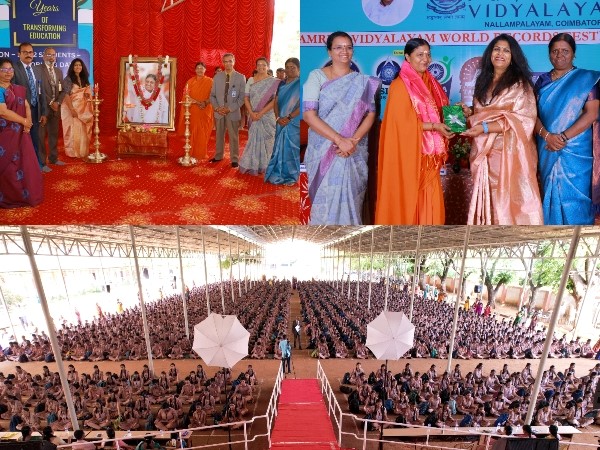
"Third Launch Pad at Sriharikota; Rs 3984.86 cr project to be completed in 4 Years": Union MoS Jitendra Singh in Rajya Sabha
Apr 03, 2025
New Delhi [India], April 3 : Union Minister of State (Independent Charge) Jitendra Singh on Thursday said that a Third Launch Pad (TLP) will be established at Satish Dhawan Space Centre of ISRO in Sriharikota.
As per an official release, in a written reply in the Rajya Sabha, Jitendra Singh said that the project has been approved by the Union Cabinet ,and financial sanction has been obtained for a total budget outlay of Rs 3984.86 Crore.
He also said that the establishment of the pad is envisaged to be completed within a four-year timeframe.
"ISRO's Next Generation Launch Vehicle (NGLV), which is under development is about 90 m tall with a maximum lift-off mass of approximately 1000 tonne. Existing launch pads at Sriharikota cannot launch this class of vehicles. The propellant servicing facilities and the Umbilical Tower of the existing launch pads are not designed to meet the requirements of the new propulsion system based on Liquid Methane," Singh said in his reply.
"In view of very large height & size, the next generation of launch vehicles are planned with horizontal integration and transport, which are then tilted onto the launch pad along with a Tiltable Umbilical Tower (TUT). Also, TLP incorporates necessary features in terms of foundation support & servicing requirements for future augmentation towards supporting the launches of India's Crewed Lunar mission," the Union MoS said.
Jitendra Singh, further emphasized that the first stage of NGLV is configured with a cluster of nine engines. "The hot testing of this stage is planned at the Launch Pad, thereby eliminating the need for establishing a huge separate facility for stage testing," Singh said in his reply in Rajya Sabha.
In another reply in the Upper House, Union MoS Jitendra Singh asserted that the Space Applications Centre (SAC), a premier research and development hub of ISRO, has been at the forefront of pioneering space technology innovations since its inception in 1966.
"Established by Dr. Vikram Sarabhai in Ahmedabad, SAC has played a crucial role in developing key payload technologies for Earth Observation, Communication, Navigation, and Space Exploration. From contributing to the Chandrayaan-3 mission to advancing quantum technologies and satellite-based applications for agriculture, oceanography, and disaster management, SAC continues to drive India's space vision forward," he said.
"Located at Ahmedabad, SAC is spread across three campuses having multi-disciplinary activities apart from Delhi Earth Station (DES), which is located in New Delhi," Jitendra Singh said.
He highlighted that SAC has state-of-the-art electronic and mechanical fabrication facilities, highly sophisticated payload integration, climatic & environmental test facilities, systems reliability area, image processing and analysis facilities and project management support group.
The Union MoS pointed out that the SAC is the lead centre in the development of key payload technologies for Earth Observation, Communication, Navigation and Space Exploration.
"The notable technologies that were developed by the Space Applications Centre for spacecraft payloads including S-Band SAR for NASA-ISRO Synthetic Aperture Radar (NISAR) mission, C-Band and X-Band Microwave Radars for RISAT series, Lander/Rover Cameras, Ka Radar Altimeters, Hazard Detection and Avoidance Sensors for Lunar Landing for Chandrayaan-3, demonstration of spectrum sensing, ADS-B, GNSS-R reflectometry, Pseudolite systems for RLV, High resolution Electro-optical payloads, Ka-band payload for high throughput satellites (50 Gbps), spread-spectrum modems for Gaganyaan crew communication system, Indian Atomic clock-Indian Rubidium Atomic Frequency Standard (IRAFS) for NavIC and Travelling Wave Tube Amplifiers (TWTA) for Communication satellites," Singh highlighted.
"Currently, a large number of payloads are under various stages of realization at SAC including, GSAT-7R, HRSAT Series, Resourcesat-3 series, Oceansat-3A, G20- Satellite, Indian Mauritius Joint Satellite (IMJS), GSAT-N3, IDRSS-2, payloads for Quantum Communication," the Union MoS said in written reply in Rajya Sabha.

























